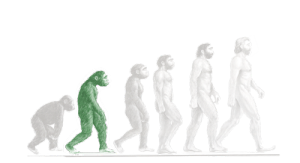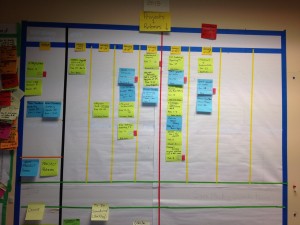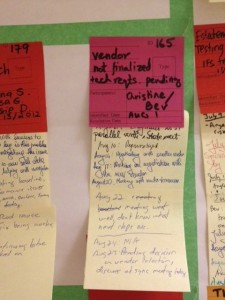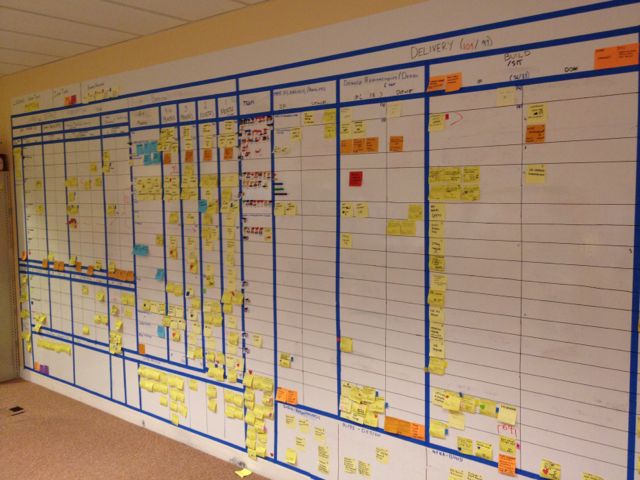
At the beginning of the transformation, we took over a photo copier room in order to create the world’s largest Kanban board! This Kanban board started its life as a typical Kanban board. It reflected the current process and had everything from intake through to delivery and operational work on it. It included change management queues, data operations, infrastructure and more.
We started by having stand-ups 3 times per week in front of this board and we’d review issues, risks and blockers. We attempted to capture current state and measure throughput by the way of MMF’s (minimal marketable features) but the board was far too complex and nobody (other than the change agents) actually used it.
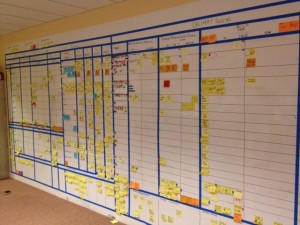
Once our internal coaching team took over from the external consultants, we let it die until one day a few managers and a director realized they could use this crazy wall to manage their work! After that, it morphed into this:
The left side of the wall had a Portfolio Board, Release Board, Issue/Risk/Blocker Board and QMO (the coaching team) board.
Portfolio Wall:
- Shows progress from Intake through to Delivery.
- Swimlanes represent Service Groups
- Green stickies represent work related to the business transformation program
- Pink stickies represent un-funded work
- White stickies represent repeatable or Op Ex related work
- Team and project health indicators were designed to reduce status reporting
Release Wall:
- A list of all releases happening in the organization. This was reviewed weekly and run by the IT change management team.
Issues/Risks/Blockers:
- Any issues that needed to be discussed at the 3-times-per-week stand-up meeting
- Escalation policy was in place to involve executives if the issue wasn’t resolved within 2-weeks. We didn’t enforce this very much.
QMO Board:
- Work and MVC’s that the coaching team was working on
The back wall was an open space working area. It’s difficult to see, but one of the boards on the back wall was the managers improvement canvas. On the right side of the wall, we built a dependancy board as the main business transformational program had a number of dependancies with “foundational” projects.
Dependancy Board:
- PM’s would inject work into another projects work stream when a dependancy came up.
- Columns represent sprints.
System Architecture Diagram:
- On the far right side was the system architecture diagram showing how all the applications and components fit together. The Enterprise Architecture team kept this updated and also held information sessions monthly to keep people aligned on the big picture.
